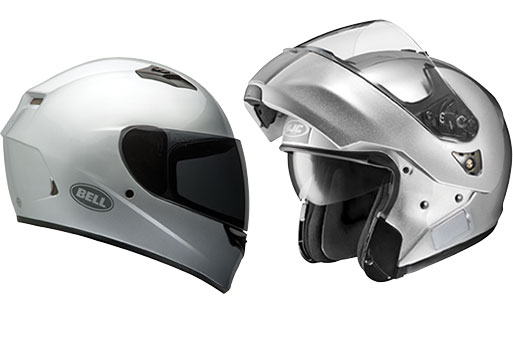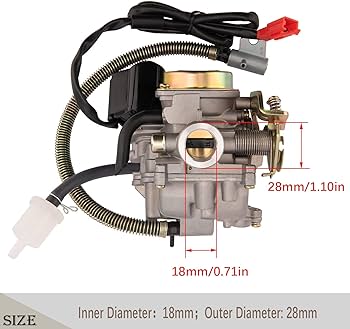When choosing between a modular and a full face helmet, it’s important to consider the level of protection and versatility you need. Both helmet types provide different features and benefits.
A modular helmet offers the convenience of a flip-up chin bar, making it easier to take on and off, while a full face helmet provides maximum protection and aerodynamics for high-speed riding. Understanding the differences between these two options will help you make an informed decision based on your riding style and preferences.
When it comes to motorcycle safety gear, helmets are a crucial consideration. As one of the most vital pieces of protective equipment, the choice between a modular and a full face helmet can significantly impact your riding experience. We’ll delve into the various aspects of modular and full face helmets, comparing their features, benefits, and drawbacks to help you determine which option best suits your needs and preferences. So, let’s explore the differences between these two popular helmet styles to help you make an informed decision.
Contents
Understanding Helmet Types
Differences Between Modular And Full Face Helmets
When it comes to motorcycle helmets, two primary types dominate the market: modular and full face. Each type offers distinct advantages and considerations, making it essential for riders to understand the differences between them before making a choice.
Core Functions And Design Philosophy
At their core, modular and full face helmets prioritize rider safety and protection. A full face helmet is a one-piece design, offering a continuous shell that covers the entire head and face. On the other hand, modular helmets feature a hinged chin bar that can be lifted, providing the convenience of an open-face helmet when desired. Design-wise, both types focus on impact absorption, ventilation, and aerodynamics to ensure optimum safety and comfort for the rider.
Usage Scenarios And Rider Preferences
Whether to choose a modular or full face helmet often depends on the rider’s specific needs and preferences. Full face helmets are preferred for their maximum protection, making them ideal for high-speed riding and more aggressive biking styles. On the other hand, modular helmets offer versatility, allowing riders the ease of communication, access to fresh air, and the convenience of easily flipping up the front section without fully removing the helmet. Riders who value convenience and flexibility may opt for modular helmets for their day-to-day commuting needs. It’s important to note that rider preferences can vary, and it’s crucial to consider individual comfort and safety considerations when choosing between modular and full face helmets.
Features Of Full Face Helmets
Full face helmets are a popular choice for riders due to their comprehensive protection and advanced features. Let’s delve into the key components that make full face helmets stand out from the crowd.
Protection Coverage And Impact Resistance
Full face helmets offer complete coverage, protecting not only the skull but also the entire face, including the chin and jaw areas. This extended protection significantly reduces the risk of facial injuries in the event of an accident. Additionally, these helmets are designed with robust materials and advanced impact-absorbing technology, ensuring high levels of impact resistance. The sturdy construction of full face helmets provides riders with a sense of security and confidence while on the road.
Aerodynamics And Noise Reduction
The aerodynamic design of full face helmets minimizes wind resistance, allowing riders to enjoy a smooth and stable riding experience. This streamlined construction not only enhances the overall comfort but also contributes to improved control at higher speeds. Furthermore, full face helmets are equipped with effective noise reduction features, reducing wind and road noise to promote a quieter and more enjoyable ride. The combination of aerodynamics and noise reduction makes full face helmets a top choice for riders seeking optimal performance and comfort.
Visor And Ventilation Systems
Full face helmets come with a built-in visor that provides clear visibility while protecting the eyes from debris, insects, and harsh weather conditions. The visor can often be adjusted or replaced, offering customization options to suit varying light and weather conditions. Moreover, these helmets incorporate advanced ventilation systems that promote airflow, preventing heat buildup and ensuring breathability. This ventilation not only enhances comfort during long rides but also helps in preventing fogging, making full face helmets a versatile choice for riders in diverse weather conditions.
Modular Helmet: Flexibility In Use
When it comes to motorcycle helmets, the debate between modular and full face options is a hot topic among riders. Under the subheading “Modular Helmet: Flexibility in Use,” let’s explore the mechanisms, advantages, and safety considerations associated with modular helmets.
Mechanism Of Modular Helmets
Modular helmets, also known as flip-up or convertible helmets, are designed with a hinged chin bar that can be conveniently flipped up to convert the helmet into an open-face style. This ingenious mechanism enables riders to enjoy the benefits of both full face and open-face helmets in one design. With the ability to easily switch between the two configurations, modular helmets offer exceptional versatility.
Advantages Of Modularity In Urban Riding
For urban riders, the modularity of helmets brings unmatched convenience. The ability to easily flip up the chin bar without having to remove the entire helmet is ideal for quick stops or when engaging in conversations without sacrificing safety. This flexibility makes modular helmets particularly well-suited for city riding where frequent stops and interactions are common, adding a layer of practicality to the riding experience.
Comparison To Full Face In Terms Of Safety
While the modular helmet offers versatility, it’s important to consider safety implications. When in the closed, full face position, the security and strength provided are comparable to traditional full face helmets. However, the hinge mechanism introduces a potential weak point, and in the event of a crash, the chin bar’s locking system must hold up under impact. It’s crucial for riders to assess their individual riding habits and prioritize safety when choosing between a modular and full face helmet.
Choosing Your Helmet: Safety And Comfort Considerations
When it comes to choosing the right motorcycle helmet, safety and comfort are paramount considerations. The decision between a modular and a full-face helmet involves weighing various factors related to safety standards, comfort, visibility, and air flow. Understanding these aspects can help riders make an informed choice that prioritizes their well-being on the road.
Safety Standards And Certifications
Before investing in a helmet, riders should ensure it meets the necessary safety standards and certifications. Look for helmets that comply with safety regulations such as DOT (Department of Transportation), ECE (Economic Commission for Europe), or SNELL (Snell Memorial Foundation). The presence of these certifications assures the helmet’s ability to provide essential protection in the event of an accident.
Comfort Factors: Weight, Padding, And Fit
The comfort of a helmet is imperative for a pleasant riding experience. Consider the weight, padding, and fit of the helmet. Look for a lightweight option that reduces strain on the neck and shoulders during long rides. Ample padding inside the helmet not only enhances comfort but also absorbs impact forces in the event of a crash. Additionally, a secure and adjustable fit ensures that the helmet stays in place without causing discomfort or distractions while riding.
Visibility And Air Flow
Optimal visibility and air flow are key components of a comfortable and safe helmet. A wide field of vision enhances awareness on the road, while effective ventilation prevents fogging and keeps the rider cool. Evaluate the helmet’s visor design and ventilation system to ensure they meet your needs for visibility and air flow.
Modular Vs Full Face Helmet: Making The Right Decision
Deciding between a modular and a full face helmet can be a tough choice for riders. Each type has its advantages and drawbacks, and finding the right one depends on various factors such as personal riding style, safety preferences, and maintenance habits. To help you make an informed decision, let’s delve into the situational benefits and drawbacks, personal riding style, and helmet maintenance, followed by recommendations for different types of riders.
Situational Benefits And Drawbacks
When it comes to comparing modular and full face helmets, it’s essential to consider the situational benefits and drawbacks associated with each type. While a modular helmet provides the convenience of flipping up the front section, allowing for easy communication and quick access, a full face helmet offers maximum protection by covering the entire face and chin. On the downside, the modular helmet may compromise safety due to the hinge mechanism, whereas the full face helmet can be less practical for stop-and-go city riding due to limited ventilation.
Personal Riding Style And Helmet Maintenance
Your personal riding style and commitment to helmet maintenance also play a crucial role in choosing between a modular and full face helmet. Whether you prefer long-distance touring, city commuting, adventure riding, or off-road exploration, your riding style will determine the level of comfort, protection, and visibility you need from a helmet. Additionally, your diligence in helmet maintenance, including regular cleaning, visor replacement, and strap adjustments, should align with the design and construction of the chosen helmet.
Recommendations For Different Types Of Riders
Based on the situational benefits and drawbacks, as well as considerations for personal riding style and helmet maintenance, here are recommendations tailored to different types of riders:
- Long-Distance Touring: For riders who prioritize comfort and convenience during lengthy journeys, a modular helmet with a flip-up chin bar may offer the flexibility needed for communication and quick stops without compromising safety.
- City Commuting: Opting for a well-ventilated and lightweight modular helmet can be advantageous for urban commuting, providing the option to lift the front section for better airflow and interaction when off the bike.
- Adventure Riding: When venturing off-road or exploring diverse terrains, a full face helmet with a robust chin guard and superior impact protection is recommended to ensure maximum safety and durability.
- Off-Road Exploration: For off-road enthusiasts, a snug-fitting full face helmet with ample ventilation and an integrated visor is essential to withstand various elements while maintaining clear visibility.

Credit: www.chapmoto.com
Frequently Asked Questions On Modular Vs Full Face Helmet
Are Modular Helmets Safer Than Full-face Helmets?
Modular helmets offer versatility but are generally not as safe as full-face helmets. While both provide protection, the design of a full-face helmet offers more comprehensive coverage, especially for the chin and jaw area, reducing the risk of injury in the event of a crash.
Can You Wear Glasses With A Full-face Helmet?
Yes, you can wear glasses with a full-face helmet. Look for helmets with features specifically designed to accommodate glasses, such as an interior groove for the frame arms to fit into or an easily removable and replaceable inner padding to create more space for the glasses.
What Are The Advantages Of A Modular Helmet?
Modular helmets provide the convenience of a flip-up chin bar, allowing for easier communication, eating, and drinking without having to remove the entire helmet. They also offer a wider field of view compared to full-face helmets, making them a popular choice for many riders.
What Is The Difference Between Modular And Full-face Helmets?
The main difference lies in the ability to easily lift the chin bar on a modular helmet, offering the benefits of both open-face and full-face styles. Full-face helmets, on the other hand, provide maximum coverage and protection, with a fixed chin bar, making them generally safer for high-speed riding.
Conclusion
To sum up, the choice between a modular and full-face helmet depends on your preferences and needs. Both offer unique advantages and it’s important to prioritize safety and comfort. Consider factors like riding style and environmental conditions when making your decision.
Ultimately, the right helmet is the one that best suits your individual requirements.


